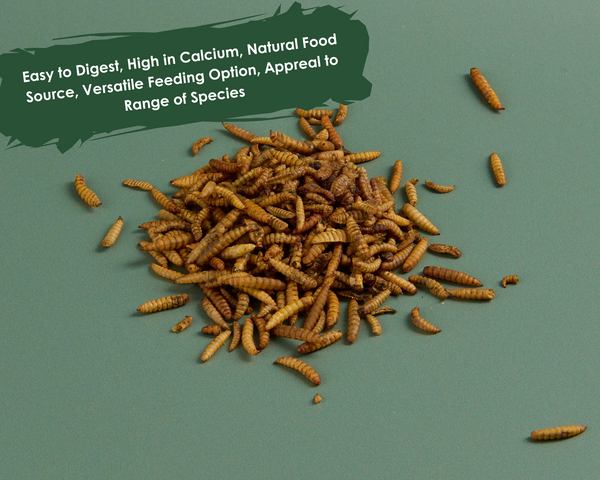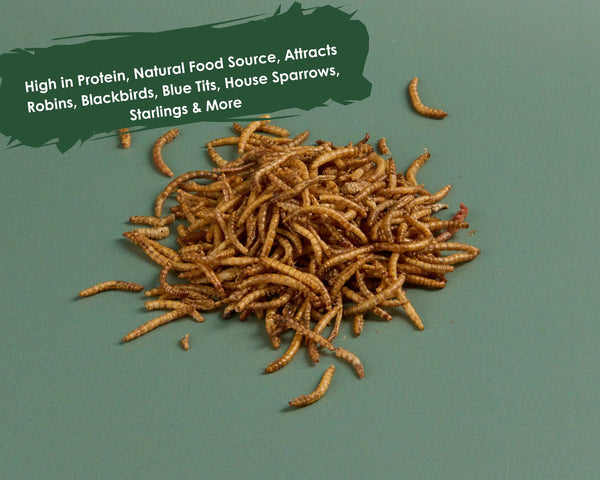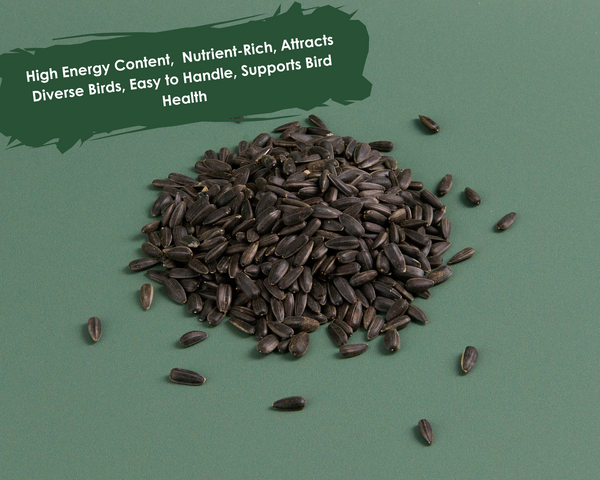First Signs of Autumn In the UK
Once a year, the orange leaves of trees start to emerge and the Autumn season begins, along with the cold weather and amazing animal behaviours it brings with it.
From leaf litter and falling seeds to the green colour of leaves slowly turning to orange, the Autumn months are important and for a lot of nature, it's the prime time to start preparing for winter. The first signs of autumn such as fallen leaves and noticeably shorter days give animals the first warning to prepare for winter.
The word Autumn comes from a Latin word, and the meaning of this word is 'the passing of the year'.
Although it's always sad to see Summer leave us - there are so many incredible things to spot in Autumn! In this blog we're going to discuss how nature changes, making the autumn start.
When Does Autumn Start?
Meteorologists divide the year into four seasons of equal length based on the Gregorian calendar. Autumn runs from early September to November 30th. This method makes it easier to compare seasonal and monthly statistics but it does differ to the one based on the autumnal equinox.
Astronomical autumn begins with the autumn equinox, when day and night are approximately equal in length. This marks the point when the Sun crosses the celestial equator moving southward, signaling the official start of autumn in the Earth's northern hemisphere. This means it's usually around September 22 - although the date can vary every year.
The Changing Colours of The Leaves

One of the most iconic first signs of autumn is the leaves changing colour from their summer green to vibrant shades of yellow, orange, and red. This transformation occurs in deciduous trees as they prepare for the colder months, reducing chlorophyll production and allowing other pigments to emerge. The changing colours of the leaves are not just a visual treat but a crucial part of the tree’s life cycle.
As these leaves fall, they create a leaf litter on the forest floor. This layer of fallen leaves plays a vital role in the ecosystem, providing nutrients to the ground as they decompose and offering shelter for small animals and insects. The trees themselves, now bare, stand in stark contrast to their lush summer appearance, signaling the approach of winter.
Wildlife Preparing for Winter Solstice

The season is also marked by the ripening of berries and fruits, a period often described as mellow fruitfulness. These natural food sources are critical for wildlife, providing energy for migration or storage for the winter months. Falling seeds from plants like corn stalks also contribute to the seasonal abundance, supporting a diverse range of animals and insects.
Autumn is a busy time for squirrels as they gather and store food for the winter. You may see them collecting acorns, nuts, and seeds, burying them in the ground or stashing them in tree hollows. Their frantic activity is a key indicator that colder days are on the way.
Hedgehogs also prepare for winter during autumn. These nocturnal creatures spend the season building up their fat reserves by feasting on insects, slugs, and worms. As autumn progresses, they begin searching for a suitable place to hibernate, such as a pile of leaf litter or a sheltered spot in a garden.
The Last Buzz of Insects
As autumn progresses, bee and wasp activity begins to decline. These insects are busy collecting the last of the nectar from late-blooming flowers like ivy. Honeybees store the nectar in their hives to survive the winter, while bumblebees and wasps prepare to die off, with only the queen surviving to start a new colony in the spring.
Some butterfly species, such as the red admiral and painted lady, can still be seen on warm autumn days. These butterflies often feed on the late-blooming flowers or the juices of rotting fruits. Many moth species are also active in autumn, laying eggs that will overwinter and hatch in the spring.
Autumn is spider season in many parts of the UK (and not just for Halloween!). You’ll notice more webs glistening with dew on cool mornings. Many spiders, such as the garden spider, are at their largest during autumn, having spent the summer growing. These webs are not just a visual delight; they are crucial for catching the last of the season's flying insects.
Autumn Birds & Bird Watching Opportunities

Autumn is a crucial time for many birds, as they prepare for migration. Species like Canada geese begin their long journey south, often seen flying in their distinctive V-formation.
This is also the prime time to observe small birds gathering on telegraph wires, signaling their imminent departure. Birdwatchers know that autumn is one of the best seasons for spotting a variety of migrating species.
What to Feed Birds in Autumn
During Autumn, birds need energy rich foods to build up fat reserves for colder weather and migration. Seeds such as sunflower seeds, niger seeds, and mixed birdseed blends are popular choices, providing essential nutrients and oils. Sunflower hearts are particularly beneficial as they're easy for smaller birds like finches and tits to eat, while niger seeds attract species like goldfinches.
Additionally, offering fat based foods like suet balls, fat cakes, and mealworms can help provide a quick source of calories. Suet is a high energy food that’s particularly appreciated by species like robins, woodpeckers, and starlings. Mealworms, whether live or dried, are a great protein source that many insect-eating birds, such as robins and blackbirds, will seek out in autumn when natural insect availability starts to decline.
Fruits such as chopped apples, pears, or berries can also be placed on bird tables. These appeal to species like blackbirds, thrushes, and even migratory birds passing through. Ensure to clean up fallen or decaying fruit regularly to prevent disease. Lastly, avoid bread, which offers little nutritional value and can harm birds if consumed in excess.
Migratory Birds

One of the most iconic sights of autumn is the V-formation of Canada geese flying southward. These large birds begin their migration from the northern regions as the weather cools, heading to warmer climates in the southern United States or even Mexico. Their honking calls and distinctive flight pattern are a clear sign of autumn.
Small birds like swallows and swifts also migrate during this time. These agile flyers can be seen gathering in large numbers on telegraph wires before embarking on their long journey to Africa. Watching these birds prepare for migration is a special experience, as they are often seen swooping through the air catching insects.
Various species of warblers, such as the willow warbler and the blackcap, pass through the UK during autumn on their way to warmer regions. They are more challenging to spot due to their small size and quick movements, but they can be found in woodlands and hedgerows.










